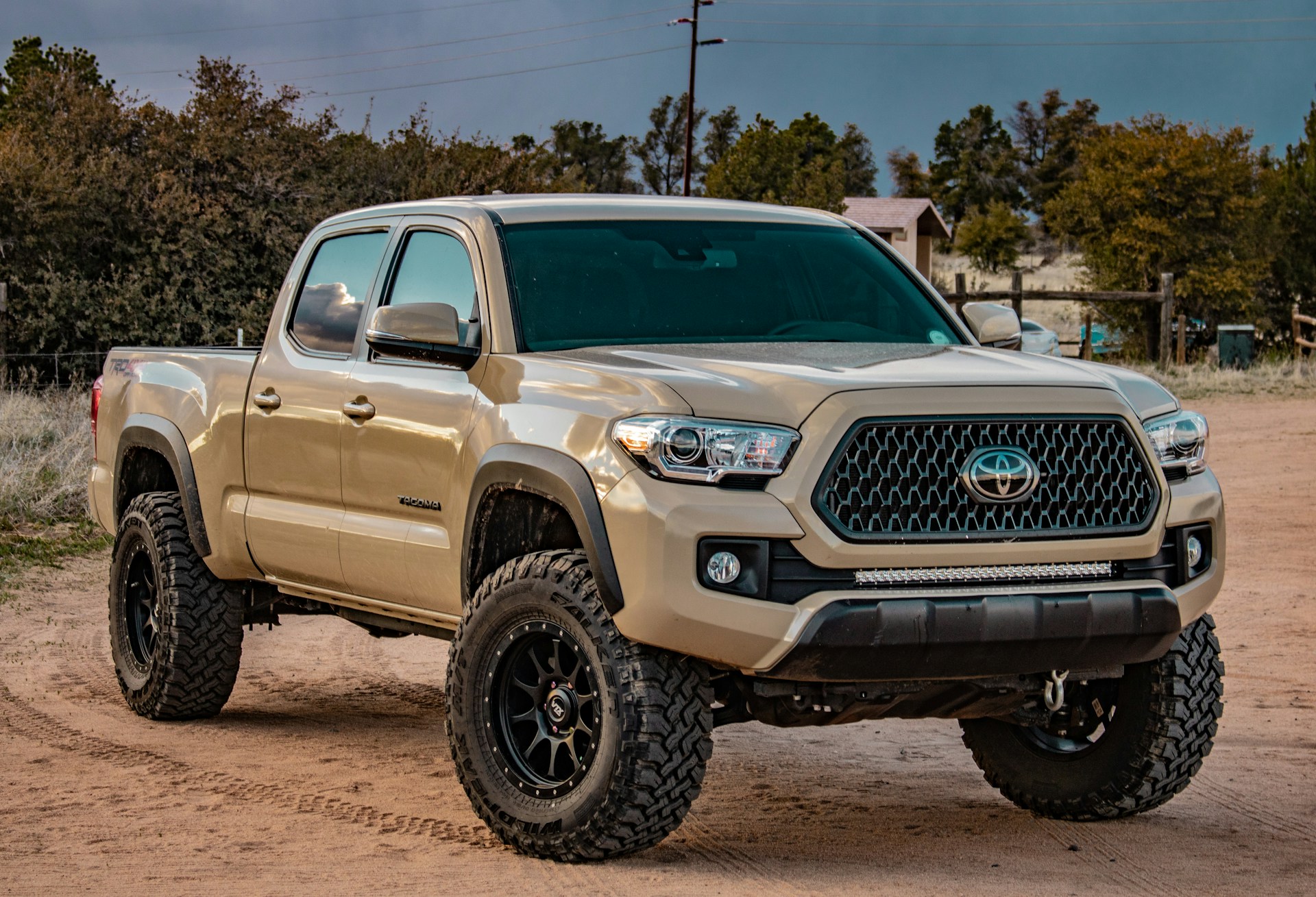What’s the Best Way to Improve the Off-Road Navigation System in a Toyota 4Runner for Remote Adventures?

In today’s world of adventuring and overlanding, your vehicle is more than just a method of transport – it’s your passport to pioneering uncharted landscapes. The Toyota 4Runner, a well-known and respected runner in the world of off-roading, is a fantastic choice for these kinds of adventures. However, to make the most of every journey, it’s crucial to have an effective navigation system in place. So, how can you upgrade the off-road navigation system in your Toyota 4Runner for remote adventures? This article provides a detailed guide on the best ways to improve your navigation system, focusing on the vital elements of GPS, terrain mapping, safety features, and vehicle suspension adjustments.
Understanding the Importance of a Reliable Navigation System
A reliable navigation system is more than just a convenient tool for everyday driving. For off-road adventurers and overlanding enthusiasts, it is a critical piece of kit that ensures safety, efficiency, and the overall success of any off-road expedition. A well-equipped navigation system can help you plan your route meticulously, keep you updated about the terrain, and help you avoid potential dangers. It also enables you to locate essential services and parts during your journey, especially when you’re traveling through remote and unfamiliar landscapes.
Lire également : How to Retrofit Ambient Interior Lighting in a Volkswagen Golf MK6 for a Premium Atmosphere?
When it comes to upgrading the navigation system in your Toyota 4Runner, you must understand its current capabilities and limitations. The Toyota 4Runner is equipped with Toyota’s TRD Pro, a sophisticated off-roading system that includes a multi-terrain select feature. However, if you plan on taking your vehicle to the most remote parts of the world, some improvements can enhance your navigation experience.
Upgrading the GPS System
The GPS system of your Toyota 4Runner is a crucial component of your navigation system. It guides you through unfamiliar environments, enabling you to get from one place to another without getting lost. However, when you’re out on an off-road adventure, conventional GPS systems may not be sufficient.
A lire en complément : Can You Add an OEM-Looking Spoiler to a Mazda 3 for Improved Aerodynamics Without Spoiling the Aesthetics?
Some areas may not have detailed maps, or the GPS signal might be weak. To counter this, consider upgrading to a satellite GPS system. It uses satellites instead of cellular signals and offers greater coverage, especially in remote locations. More advanced GPS systems also provide additional features like trail tracking, enabling you to retrace your journey or share it with other off-roaders.
Enhancing Terrain Mapping and Route Planning
Knowing the terrain you’re about to traverse is an integral part of off-roading. It helps you avoid potential hazards and allows you to plan your route more efficiently. While the Toyota 4Runner’s TRD system offers terrain mapping, it may not always provide the level of detail required for serious off-road adventures.
To enhance your terrain mapping abilities, consider investing in a specialized terrain mapping system. These systems offer detailed topographic maps and other useful information like altitude, slope inclination, and ground type. They also facilitate better route planning, allowing you to mark waypoints, calculate distances, and even save routes for future use.
Focusing on Safety Features
Off-roading is an exciting but inherently dangerous activity. Therefore, safety should never be an afterthought. Your navigation system should be equipped with safety features that protect you and your vehicle from harm.
For starters, invest in a reliable emergency communication system, preferably one with a satellite connection. It ensures that you can call for help even in areas with no cellular service. Upgrade to a navigation system that offers real-time weather updates, so you’re aware of potential weather-related hazards ahead. Furthermore, include a system that supports geofencing. It helps you set boundaries for your journey, ensuring you don’t wander into potentially dangerous territories.
Adjusting Vehicle Suspension and Gear
Finally, while not directly related to navigation, adjusting your vehicle’s suspension and gear can significantly enhance your off-road experience. The Toyota 4Runner’s TRD system already provides a robust suspension system, but for more extreme terrains, you may want to consider additional upgrades.
Installing a lift kit is a popular upgrade among off-roaders. It increases the vehicle’s ground clearance, enabling it to tackle steeper inclines and rougher terrains. Additionally, consider upgrading your tires to ones specifically designed for off-roading. They offer better traction and are more resistant to punctures.
In conclusion, while the Toyota 4Runner is a competent off-road vehicle, there’s always room for improvement. With the right upgrades and adjustments, you can significantly enhance its navigation capabilities, making it a reliable companion for your off-road adventures.
Exploring Advanced Navigation Technologies
When considering advanced technologies for your Toyota 4Runner navigation system, it’s essential to think beyond the standard GPS map. The world of off-roading is vast and unpredictable, and relying solely on GPS for navigation might not be sufficient, especially in remote areas. This is where additional overlanding-specific equipment comes into play, enhancing your journey’s safety and efficiency.
Comprehensive satellite communication systems like the Garmin inReach Explorer+ not only provide precise GPS tracking but also offer two-way messaging, SOS emergency response, and weather forecasts. This can be a real game-changer for off-roaders venturing into remote areas with no cellular service.
For terrain mapping, systems like LeadNav offer advanced GPS with high-resolution satellite imagery and topographic maps. It provides real-time tracking, advanced planning tools, and audio navigation, making it easier to navigate challenging terrains. Furthermore, it allows you to develop and share routes with other off-road adventurers, creating a community of explorers.
Lastly, an often overlooked but equally important component of navigation is a suitable roof rack. A sturdy roof rack like the Rhino-Rack Pioneer Platform can securely hold your extra gear, such as alloy wheels, spare fuel, and recovery equipment.
Preparing for Emergencies and Unexpected Situations
In off-roading, unexpected situations are part of the adventure. But being prepared for these situations can make a significant difference in your overall experience. This is where emergency preparedness and careful vehicle modifications come into play.
As part of your navigation system, consider investing in an emergency communication device, preferably one with a satellite connection. This ensures that you can call for help even in the most remote areas with no mobile network coverage.
Next, consider upgrading your Toyota 4Runner’s suspension system. While the multi-terrain TRD Pro system is competent, more extreme terrains might demand additional modifications. Consider installing a lift kit – it increases ground clearance, allowing the vehicle to tackle steeper inclines and more challenging terrains.
And finally, make sure your Toyota 4Runner is equipped with the right tires. Off-road specific tires provide better traction on rough terrains and are more resistant to punctures, increasing your vehicle’s reliability and safety.
Conclusion
The Toyota 4Runner is already a formidable off-road vehicle, but with the right upgrades, it can be transformed into an unbeatable overlanding machine. By enhancing the GPS system, investing in advanced terrain mapping technologies, focusing on safety features, and making necessary vehicle suspension adjustments, you can drive into the wilderness with confidence.
Remember, the best adventures often come from venturing off the beaten path, and with these tips and tricks, your Toyota 4Runner will be ready for whatever journey lies ahead. Whether you’re a seasoned overlander or just beginning your off-road journey, upgrading your navigation system is the first step toward a safer and more enjoyable adventure.
